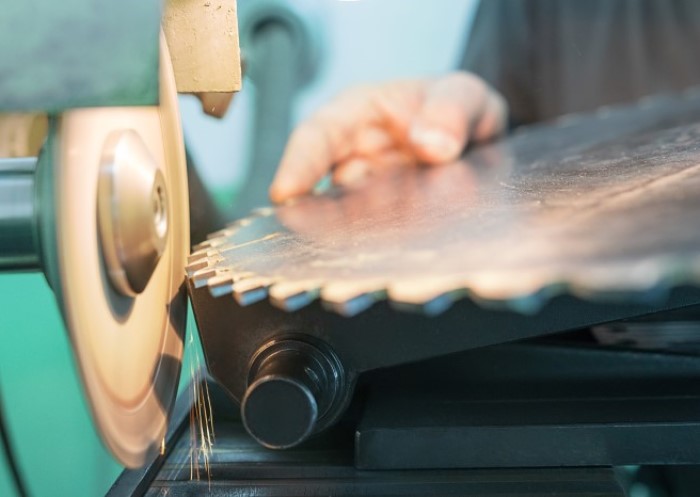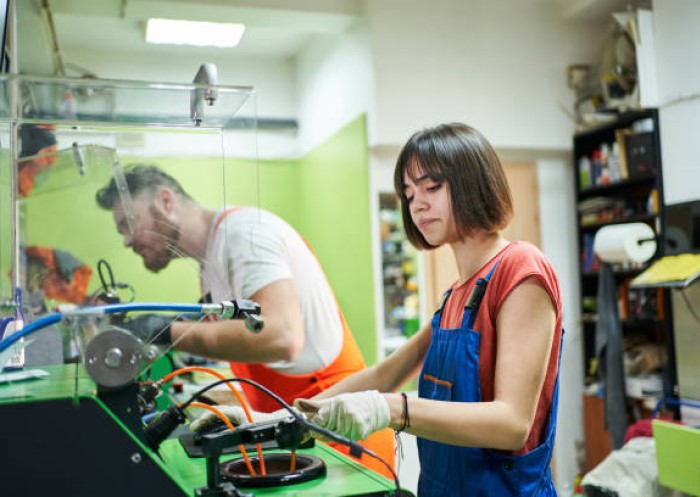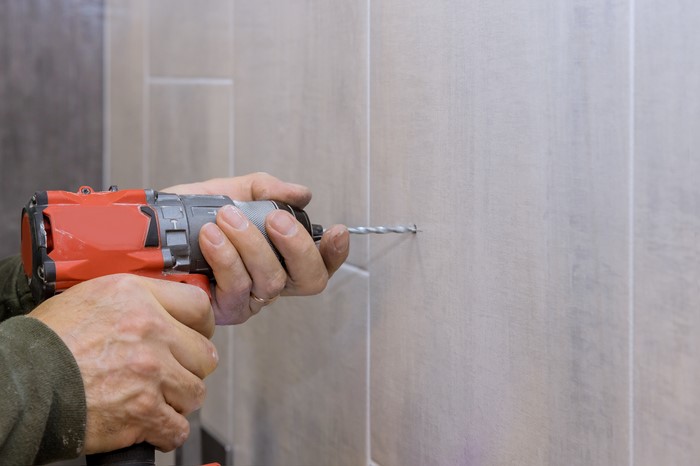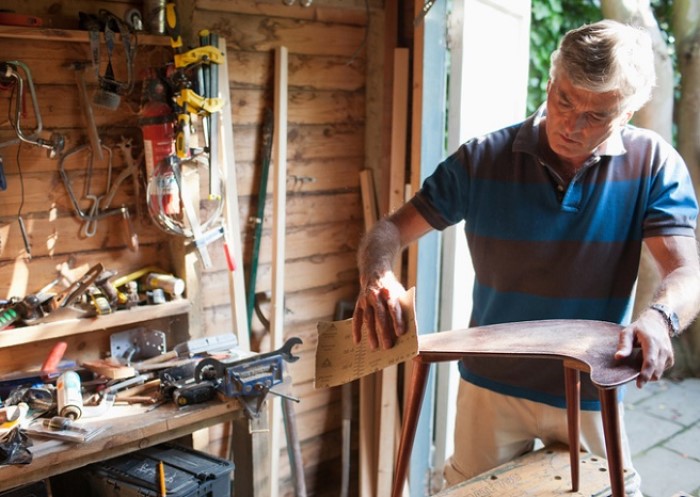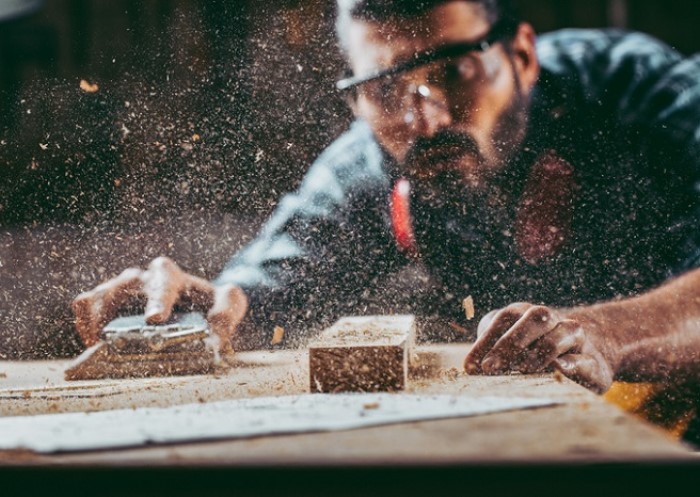Table of contents
If a saw blade is blunt, you can no longer work with the usual precision – regardless of the type of saw. By sharpening a saw blade regularly, you ensure accurate cuts and prevent the usual wear and tear on the tool. In this guide, you can learn how to sharpen a saw blade yourself, what you need to consider and in which cases this task is best left to the professionals.
Signs and dangers of a blunt saw blade
A good hand saw and a circular saw are part of a basic woodworking tool kit in a workshop. It is not always easy to tell when the saw blade is blunt, but you can recognise that your saw blade should be sharpened by the following signs:
- The cuts become unclean; the cut edges are irregular or frayed.
- The sawing progresses more slowly; the resistance seems to increase.
- The saw vibrates unusually strongly and becomes louder over time.
- There are traces of heat such as discolouration on the wood or even the appearance of smoke.
If you notice one or more of these signs, you should resharpen the saw blade. If you use a blunt saw blade for a long time, there is a risk that individual teeth will break off or that the saw blade itself will break. This exposes you to an increased risk of injury. Regular resharpening will extend the lifespan of your saw blades and save you money in the long run.
Sharpen a saw blade yourself or hire a professional?
When it comes to sharpening saw blades, you have two options on how to proceed:
- You can sharpen the saw blade yourself by hand. At best, you need a well-equipped workshop that is set up for tool repair and where a saw blade can be sharpened. This is not possible with carbide saw blades. If you do the work yourself, it is usually more cost-effective than a professional service.
- You commission professionally experienced service personnel, for example in DIY stores or tool manufacturing companies. They use powerful grinding machines that work faster and more precisely than is possible with manual sharpening. This option is worthwhile if you are not confident with the task, do not have the necessary tools or use special saws or saw blades. Often the professional sharpening service is more expensive than if you do the work yourself. A fixed price per tooth is common. In some cases, regrinding can also be more expensive than a new saw blade, for example, if many teeth are badly worn or deformed.
Sharpening saw blades cannot be done as often as you like; on average, this is possible about ten times. As some material is removed during each grinding process, the teeth will eventually become unstable. This is where a professional grinder is advantageous, as it only grinds off as much material as necessary and can thus extend the lifespan of a saw blade.
Which saw blades can be sharpened yourself?
You cannot sharpen every saw blade yourself by hand with a file. Whether you can do the sharpening yourself depends entirely on the material. The shape of the saw blade and whether it is a hand saw blade or a circular saw blade is irrelevant in how to sharpen it.
If the teeth are hardened or made entirely of carbide, you will need a special sharpening device for this type of material. Even if you know how to sharpen carbide saw blades, it is still worthwhile to have it done by professionals due to the high costs. In return, the saw blade will continue to perform at a high load capacity and remain durable for significantly longer.
In smaller workshops, chrome vanadium (CV) or carbide (HM) saw blades are mostly used. With a little practice, you can easily sharpen a CV saw blade yourself. With regular use, however, it will become blunt again comparatively quickly.
Instructions: how to sharpen a circular saw blade
If you want to grind a circular saw blade by hand, you can do it easily with the following step-by-step instructions:
- Prepare the tools
 You will need the following tools:
You will need the following tools:
• Ring spanners
• Screw clamps
• Flat file
• Locking pliers
• Triangular file - Take safety precautions
 Make sure that the circular saw is disconnected from the power supply or remove the battery before you start. To minimise the risk of injury, always wear cut-resistant protective gloves when working with the saw blade.
Make sure that the circular saw is disconnected from the power supply or remove the battery before you start. To minimise the risk of injury, always wear cut-resistant protective gloves when working with the saw blade. - Dismantle the saw blade
 Use a suitable ring spanner to loosen the nut that secures the saw blade in the circular saw. Carefully remove the saw blade from its housing.
Use a suitable ring spanner to loosen the nut that secures the saw blade in the circular saw. Carefully remove the saw blade from its housing. - Securely fix the saw blade
 Use screw clamps to fix the saw blade securely to the workbench or table before sharpening. The less surface that protrudes from the workbench, the easier it is to grind because the saw blade does not vibrate as much.
Use screw clamps to fix the saw blade securely to the workbench or table before sharpening. The less surface that protrudes from the workbench, the easier it is to grind because the saw blade does not vibrate as much. - File down the saw teeth
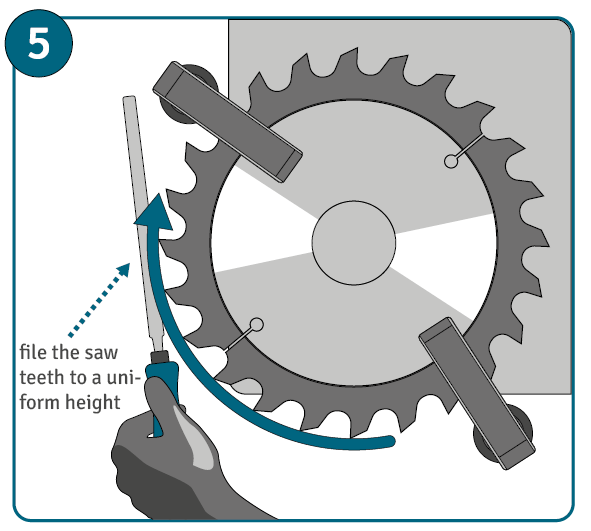 The row of teeth wears irregularly due to frequent use. Therefore, you must first trim the saw teeth back to a uniform height. To do this, use a flat file and trim each tooth tip until they all have the same height. If this has created a small edge on some of the teeth, then file all the teeth with the triangular file until they have an identical shape.
The row of teeth wears irregularly due to frequent use. Therefore, you must first trim the saw teeth back to a uniform height. To do this, use a flat file and trim each tooth tip until they all have the same height. If this has created a small edge on some of the teeth, then file all the teeth with the triangular file until they have an identical shape. - Set saw teeth apart
 Set the teeth by alternately bending them apart. This allows the saw to glide easily through the material later, allowing you to work with less effort. Use a locking pliers to bend the teeth to the right or left. It is important to always bend each tooth in the same direction each time, so as to minimise the instability of each tooth and prevent it from breaking off.
Set the teeth by alternately bending them apart. This allows the saw to glide easily through the material later, allowing you to work with less effort. Use a locking pliers to bend the teeth to the right or left. It is important to always bend each tooth in the same direction each time, so as to minimise the instability of each tooth and prevent it from breaking off. - Sharpen each tooth
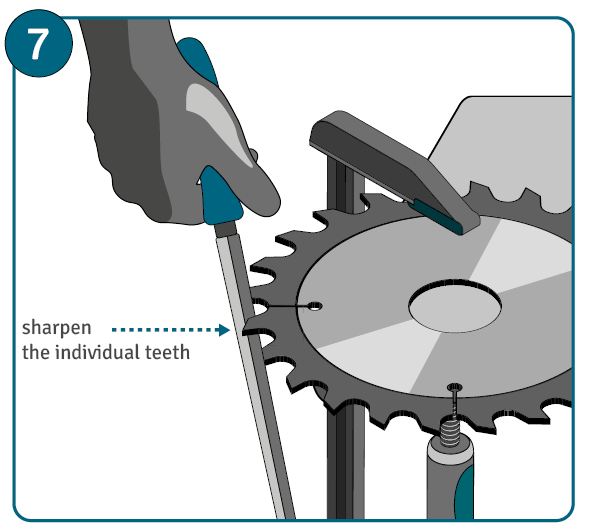 Sharpen each saw tooth individually with the triangular file in three to four strokes. Make sure to lift the file slightly when moving backwards so that you file in one direction only. Otherwise, the teeth will become or remain blunt.
Sharpen each saw tooth individually with the triangular file in three to four strokes. Make sure to lift the file slightly when moving backwards so that you file in one direction only. Otherwise, the teeth will become or remain blunt. - Remount the saw blade
 When the work is finished, you can reattach the saw blade to its case. Make sure that the teeth of the blade are facing the right direction. For most products, you will find this information on the saw blade itself or in the saw’s instruction manual.
When the work is finished, you can reattach the saw blade to its case. Make sure that the teeth of the blade are facing the right direction. For most products, you will find this information on the saw blade itself or in the saw’s instruction manual.
FAQ for sharpening saw blades
You can recognise that your saw blade is becoming blunt by taking note of the following characteristics:
• The cuts become unclean, the cut edges are irregular or fray.
• The sawing progresses more slowly, the resistance seems to increase.
• The saw vibrates unusually strongly and becomes louder over time.
• There are traces of heat such as discolouration on the wood or even smoke development.
You cannot sharpen all saw blades yourself. If the teeth are hardened or consist entirely of carbide, they cannot be sharpened by hand with a file. The only option then is a special sharpening device for carbide. This is mainly worthwhile for regular use or for workshops.
The actual sharpening process of saw blades comprises only three main steps:
1. File down the saw teeth: Use a flat file and file down each tooth tip until they are all the same height. If this has created a small surface on some of the teeth, then work on all the teeth with the triangular file until they have an identical shape.
2. Adjust the saw teeth: Bend the teeth alternately to the left or to the right with a set of pliers. It is important to bend the teeth in their original bending direction, otherwise the teeth will become unstable and break more easily.
3. Sharpen the saw blade: Sharpen each tooth individually with the triangular file in three to four strokes. Be sure to lift the file slightly when moving it backwards so that you file in one direction only. Otherwise, the teeth will become or remain blunt.
Image source:
© gettyimages.de – Allexxandar

